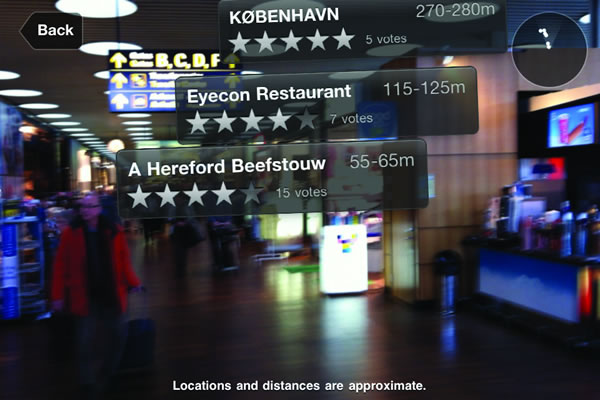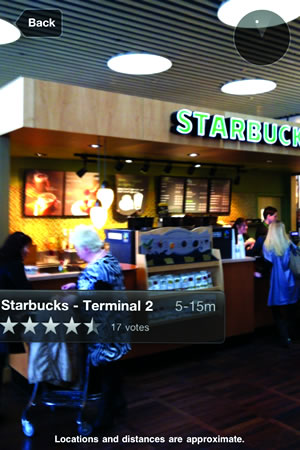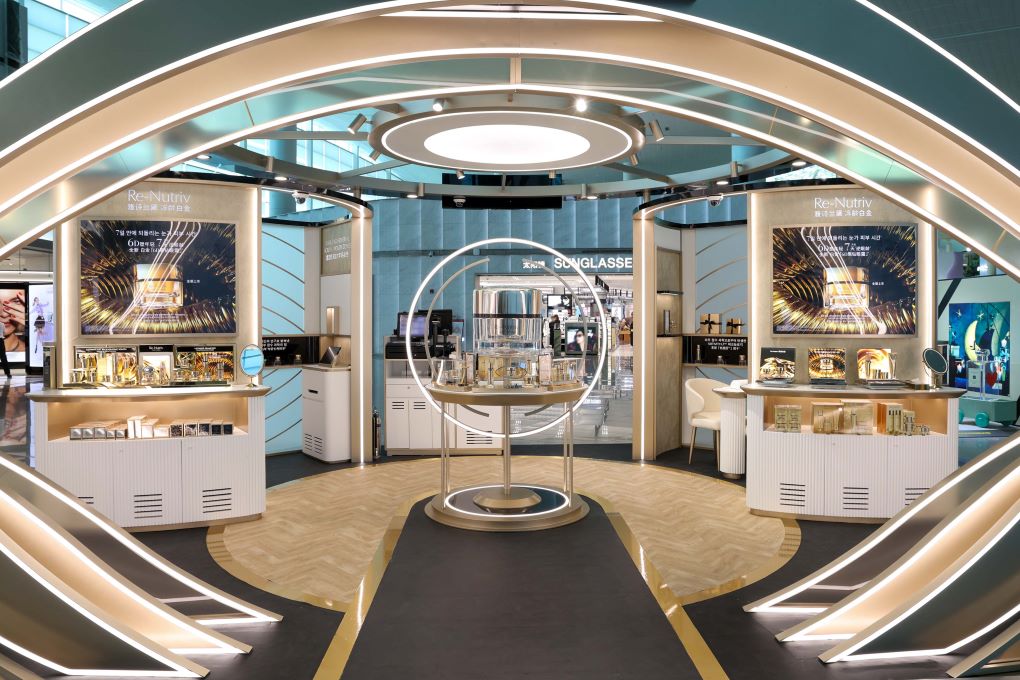DENMARK. Copenhagen Airport is introducing the CPH iPhone application, which features new, ‘augmented reality’ technology that can be used as a wayfinder inside the airport terminals.
Copenhagen Airport claims to be the first airport in the world to incorporate augmented reality in its iPhone application, which is now available in the iTunes app store at the following link: http://itunes.apple.com/app/cph-airport/id381517014?mt=8#
The technology is featured in many other apps for outdoor use, allowing mobile phones to be used for orientation purposes.
The new app is an update on the CPH iPhone application originally launched in the summer of 2010, further improved to better inform passengers about e.g. the walking distances to gates, the way to the nearest coffee shop or how to book parking. The new app has been submitted for approval by Apple, and it is expected that it will be available in the App Store “very soon”, the airport said.
The app allows users to “˜scan’ the terminals for information using their iPhone camera. The camera will photograph points of interest such as shops, restaurants and gates and tell users their distance to those points and in which direction they are located.
Depending on reception to the new app, a similar function will probably be introduced for the Android version at a later point in time, Copenhagen Airport said.
Most people are familiar with GPS positioning with apps such as Google Maps but because GPS signals cannot penetrate concrete structures, this technology does not successfully work inside the terminal buildings, the airport explained. Instead, the airport’s finely meshed Wi-Fi infrastructure will be used to provide as precise positioning as GPS indoors.
 |
 |  |
The new CPH app allows users to “˜scan’ the terminals for information using their iPhone camera, which will photograph points of interest such as shops, restaurants and gates and tell users their distance and direction to those points | |
“It is our experience that the better passengers are able to plan their time at the airport, the less stress they feel, and the more comfortable their journey will be,” said Copenhagen Airports A/S Head of IT Christian Poulsen.
“We are pleased to offer this handy tool, and our applications for Android phones as well as iPhones can help passengers find up-to-date information when needed, be it when you are on your way to the airport, or inside the airport. With the innovative augmented reality technology featured in this application, we hope to make it even easier and more fun for passengers to find their way through Copenhagen Airport.”
Poulsen added: “The information is accurate down to a few metres, and we will work on getting more exact walking distances in a coming version of the application. This is a first version of this new technology and we already have many ideas for further development. However, we are launching it now to get an indication from passengers of whether they agree with us that this could be one of the ways of improving wayfinding at the airport”.
Since July, more than 100,000 people have downloaded the iPhone app, which is so far available in three language versions: Danish, English and Swedish.
“Wayfinding of the future”
The augmented reality function has been developed in collaboration between Copenhagen Airport and German-based software house Metaio (which developed the core of AR), Danish-based software house Novasa (which is responsible for the app itself) and Global air transport IT provider SITA.
SITA developed the interface between the airport’s Wi-Fi infrastructure and the positioning on iPhone. SITA Lab, the strategic technology research team at SITA, brought its air transport expertise to the project.
Jim Peters, SITA Chief Technology Officer who heads up the SITA Lab, commented: “This innovation at Copenhagen Airport is a breakthrough not only for the airport industry but for anybody who wants to develop an augmented reality application that works indoors.
“Our work with Copenhagen Airport is a major step into wayfinding of the future when passengers use augmented reality and not just physical signs to find their way. This is also a unique opportunity to provide better service to passengers at airports – initially at Copenhagen Airport, which is the first airport in the world to use this emerging technology.”
SITA Lab works both independently and in partnership with airlines and airports, as well as emerging technology vendors to drive innovation in the industry.









